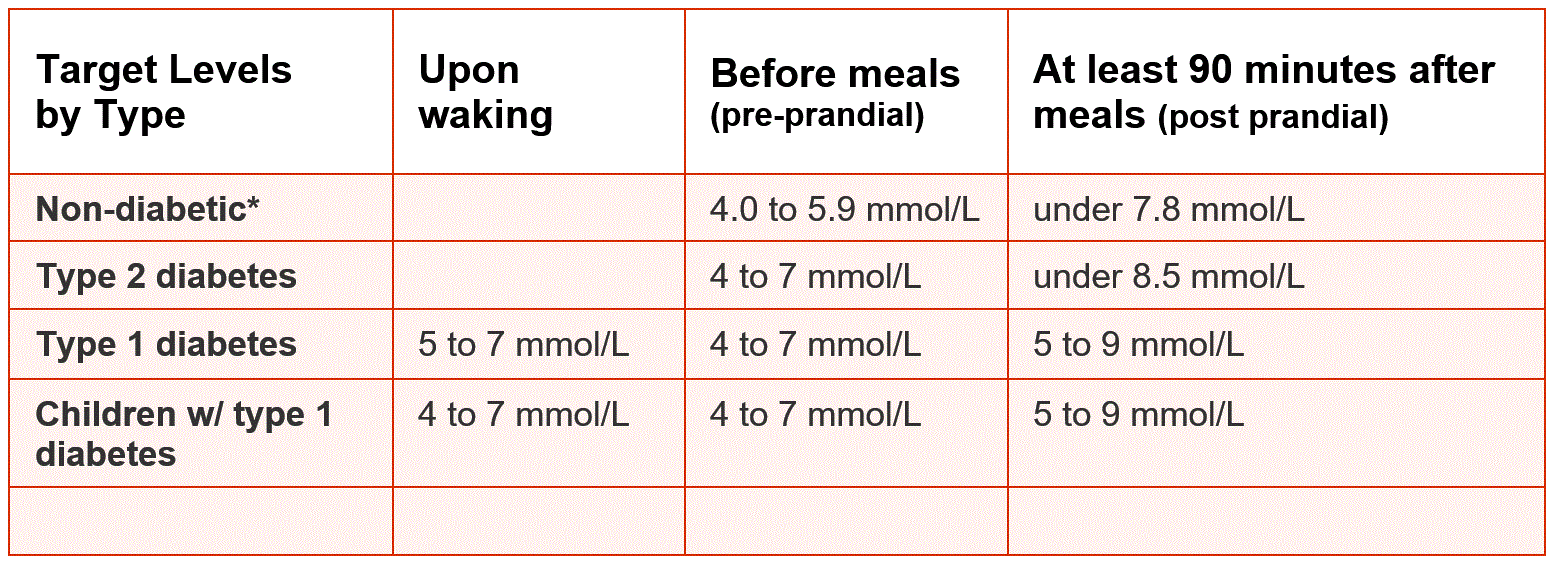Normal Blood Glucose Range
Normal blood glucose range will vary by individual. Blood sugar concentration or blood glucose level is the quantity of glucose (sugar) existing in the blood of an individual. The body naturally controls blood glucose levels as a part of metabolic homeostasis. With some exceptions, glucose is the main source of energy for the body's cells, and blood lipids (in the form of fats and oils) are chiefly a stored energy source. Glucose is transported in the bloodstream from the intestines or liver to the cells of the body where it is used by the cell for energy.
The normal blood glucose range is usually defined as less than 100 mg/dL after not eating (fasting) for at least 8 hours. And less than 140 mg/dL two hours after eating.
During the day, levels decrease to be at their lowest just before meals. For most individuals without diabetes, blood sugar levels before meals hang around 70 to 80 mg/dL. For some people, 60 mg/dL is normal; for others, 90 mg/dL.
Target blood glucose level ranges

Normal Blood Glucose Range and Diabetic Blood Sugar Ranges

For the majority of healthy individuals, normal blood sugar levels are as follows:
- Between 4.0 to 6.0 mmol/L (72 to 108 mg/dL) when fasting
- Up to 7.8 mmol/L (140 mg/dL) 2 hours after eating
For people with diabetes, blood sugar level targets are as follows:
- Before meals: 4 to 7 mmol/L for people with type 1 or type 2 diabetes
- After meals: under 9 mmol/L for people with type 1 diabetes and under 8.5mmol/L for people with type 2 diabetes
Why it is important to maintain a normal blood sugar range
It is important to maintain a normal blood glucose range because almost every part of your body can be harmed by too much sugar. Damaged blood vessels cause problems such as:
- Kidney disease or kidney failure, requiring dialysis
- Strokes
- Heart attacks
- Vision loss or blindness
- Weakened immune system, with a greater risk of infections
- Nerve damage, that causes tingling, pain, or less sensation in your feet, legs, and hands
- Poor circulation to the legs and feet
- Slow wound-healing and the potential for amputation in exceptional cases
It’s better to keep your health on track instead of facing blood sugar related difficulties which may become life threatening. Regular check-ups combined with a healthy diet and exercise can reduce the risk. Life is a gift which, once granted, we should take the best possible care of.



New! Facebook Comments
What do you think? Share your thoughts below...